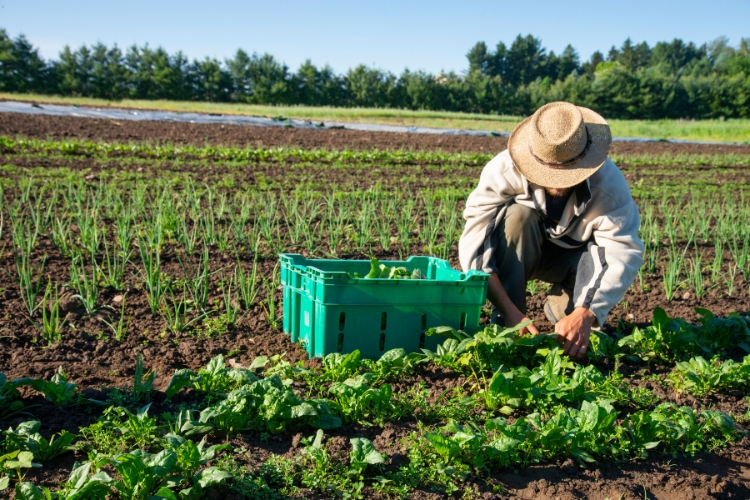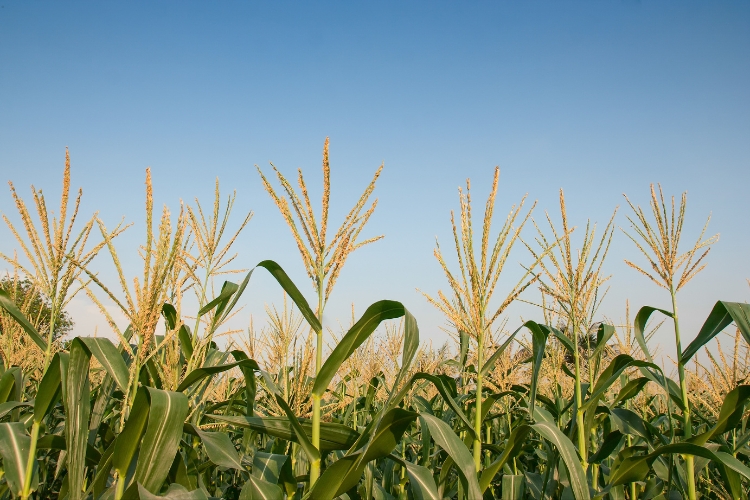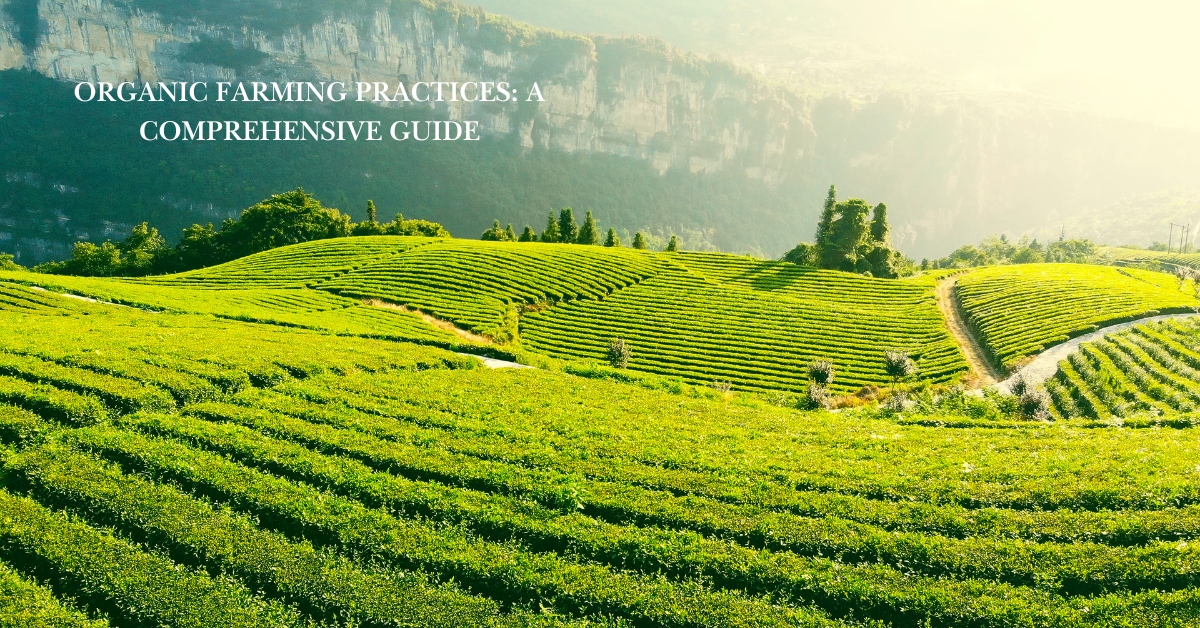Organic farming is a sustainable agricultural system that prioritizes working in harmony with nature, avoiding synthetic fertilizers, pesticides, and GMOs. Instead, it emphasizes natural methods to build soil health, control pests, and protect ecosystems.
Recognized for its health and environmental benefits, organic farming enhances biodiversity, conserves water, reduces pollution, and often yields more nutritious foods.
With roots tracing back to early 20th-century advocates like Sir Albert Howard, the movement has grown alongside rising consumer demand, offering farmers economic advantages through premium pricing.
This article explores the principles, benefits, and challenges of organic farming today.
Key Takeaways:
- Organic farming is an agricultural system that emphasizes working in harmony with nature to produce healthy food while protecting the environment.
- The four core principles of organic farming are Health, Ecology, Fairness, and Care, which shape its practices and goals.
- Key organic farming practices include building soil health, sustainable crop management, and integrated pest and weed control using natural methods.
- Technological advancements, such as precision agriculture tools and data analytics, can complement organic farming practices and enhance sustainability.
- While organic farming faces challenges like lower yields and market access, it presents significant opportunities, including growing consumer demand and premium prices for organic products.
- Organic farming plays a crucial role in environmental conservation, promoting soil health, reducing pollution, and mitigating climate change

Principles of Organic Farming
Organic farming is guided by four core principles that shape its practices and goals:
1. Health
- Avoiding the use of harmful chemicals and additives: Organic farming prioritizes the health of the soil, crops, livestock, and ultimately, human consumers by prohibiting the use of synthetic pesticides, herbicides, fertilizers, GMOs, and other potentially harmful substances.
- Focus on producing healthy crops and livestock to benefit human health: The goal is to produce food with optimum nutritional value while minimizing the presence of dangerous ingredients.
2. Ecology
- Utilizing environmentally friendly and sustainable farming practices: Organic farming employs practices that minimize environmental impact and promote ecological balance.
- Protecting soil health, biodiversity, and natural resources: This includes protecting soil fertility and structure, conserving water, reducing pollution, and enhancing wildlife habitat.
3. Fairness
- Ensuring fair treatment and working conditions for farmers and workers: Organic farming emphasizes ethical treatment and fair wages for everyone involved in the production process.
- Promoting ethical and humane treatment of livestock: Livestock raised organically must have access to pasture, appropriate living conditions, and be free from the routine use of antibiotics and hormones.
- Creating a sustainable and equitable food system: Organic farming aims to create a food system that is fair for both producers and consumers and contributes to the long-term viability of agriculture.
4. Care
- Emphasizing long-term sustainability and responsible resource management: Organic farming takes a long-term perspective, focusing on practices that preserve resources and protect the environment for future generations.
- Taking a precautionary approach to protect future generations: Organic farming prioritizes precaution and risk management, carefully considering the potential consequences of new technologies and practices.
- Combining traditional methods with modern innovation: Organic farming draws on traditional knowledge and time-tested methods while also embracing appropriate innovations that align with its principles.

Key Organic Farming Practices
A. Soil Health
Healthy soil is the foundation of organic farming. Organic farmers employ a variety of practices to build and maintain soil fertility, structure, and biological activity:
- Compost and Organic Fertilizers: Compost, made from decomposed organic matter, is a valuable soil amendment in organic farming. It provides nutrients, improves soil structure, enhances water retention, and supports beneficial soil organisms. Other organic fertilizers, such as animal manures and cover crops, are also used to enrich the soil.
- Cover Crops: Planting cover crops like clover, rye, and wheat during fallow periods or between cash crops is essential for soil health. Cover crops help prevent erosion, suppress weeds, improve soil fertility by adding organic matter, and enhance biodiversity.
- Green Manures: Green manures are specific cover crops grown and then incorporated into the soil to improve its fertility and structure. They add nutrients, increase organic matter, and enhance soil microbial activity.
- Animal Manures: Animal manures are a valuable source of nutrients for organic farming. However, their use is carefully managed to prevent contamination and ensure nutrient balance. Composting animal manure before application helps reduce pathogens and improve its effectiveness as a fertilizer.
B. Crop Management
Organic crop management focuses on promoting healthy plant growth and minimizing pest and weed pressure through natural methods:
- Crop Rotation: Rotating crops regularly is a cornerstone of organic farming. Crop rotation helps disrupt pest and disease cycles, improve soil fertility by varying nutrient demands, and manage weeds naturally.
- Organic No-Till: Organic no-till farming minimizes soil disturbance, preserving soil structure, reducing erosion, and enhancing soil biodiversity. It often involves the use of cover crops and specialized equipment to plant directly into undisturbed soil.

C. Pest and Weed Management
Organic pest and weed management relies on a holistic approach that emphasizes prevention and utilizes natural controls:
- Integrated Pest Management (IPM): IPM is a comprehensive approach to pest management that emphasizes prevention, monitoring, and the use of a variety of control methods. In organic farming, IPM focuses on creating a balanced ecosystem that encourages beneficial insects and discourages pests.
- Integrated Weed Management: Organic weed management involves a combination of cultural practices, mechanical methods, and the limited use of approved herbicides. Cultural practices include crop rotation, cover cropping, and proper timing of planting. Mechanical methods involve hand weeding, cultivation, and the use of tools like hoes and flame weeders. Approved herbicides are used sparingly and only when other methods are insufficient.
- Examples of Organic Pest and Weed Control:
- Beneficial insects: Introducing beneficial insects like ladybugs, lacewings, and parasitic wasps can help control pests.
- Natural pesticides: Substances like neem oil, diatomaceous earth, and insecticidal soaps are used to control pests.
- Mulching: Mulching with organic materials like straw or wood chips suppresses weeds and conserves soil moisture.
- Crop rotation and cover cropping: These practices help disrupt pest cycles and outcompete weeds.
D. Livestock Management
Organic livestock management prioritizes animal welfare and environmental sustainability:
- Organic Livestock Standards: Organic livestock must be raised according to strict standards that ensure their health and well-being. These standards include requirements for access to pasture, organic feed, and restrictions on the use of antibiotics and hormones.
- Rotational Grazing: Rotational grazing involves moving livestock between different paddocks on a regular schedule. This practice helps improve pasture health, reduces parasite loads, and promotes animal health.

The Role of Technology in Organic Farming
While organic farming emphasizes natural processes, it can also benefit from technological advancements that enhance sustainability and efficiency:
1. Precision Agriculture Tools
Technologies like EOSDA Crop Monitoring are increasingly being used in organic farming to optimize management practices:
- Monitoring Vegetation: Satellite imagery and remote sensing can help organic farmers assess crop health, identify potential issues like nutrient deficiencies or pest infestations, and make informed decisions about irrigation and other practices.
- Variable Rate Application (VRA): VRA allows for the precise application of inputs like fertilizers and compost based on the specific needs of different areas within a field. This helps reduce waste, minimize environmental impact, and optimize resource use.
- Soil Moisture Monitoring: Monitoring soil moisture is crucial in organic farming to ensure adequate water availability for crops while preventing overwatering. Technologies like soil moisture sensors and weather forecasting tools can assist with irrigation scheduling and improve water use efficiency.
2. Other Technological Advancements
- Data Analytics and Decision Support Systems: Data analytics can help organic farmers analyze trends, predict yields, and optimize management practices based on historical and real-time data.
- Robotics and Automation for Weed Control: Robotic weeders and other automated tools are being developed to assist with weed management in organic systems, reducing labor costs and improving efficiency.
- Blockchain for Traceability and Transparency: Blockchain technology can be used to enhance traceability and transparency in the organic food supply chain, providing consumers with greater assurance about the origin and authenticity of organic products.

Challenges and Opportunities in Organic Farming
Organic farming faces unique challenges, but it also presents significant opportunities for growth and positive impact.
1. Challenges
- Lower Yields and Higher Production Costs: Organic farming often results in lower yields compared to conventional methods, and production costs can be higher due to increased labor requirements and the need for specialized inputs.
- Pest and Weed Control: Managing pests and weeds without synthetic pesticides and herbicides can be challenging. Organic farmers rely on preventative measures, biological controls, and cultural practices, which may require more intensive management.
- Market Access and Consumer Demand: While consumer demand for organic products is growing, accessing markets and meeting the specific requirements of retailers and distributors can be challenging for organic farmers.
2. Opportunities
- Growing Demand for Organic Food: The global market for organic food continues to expand as consumers become increasingly aware of the health and environmental benefits of organic agriculture.
- Environmental Sustainability: Organic farming plays a crucial role in environmental conservation by promoting soil health, reducing pollution, and mitigating climate change.
- Premium Prices for Organic Products: Organic farmers can often command premium prices for their products, which can offset higher production costs and enhance profitability.
- Support for Organic Research and Development: There is growing investment in research and development to address the challenges of organic farming and develop innovative solutions for pest control, soil fertility, and other key areas.
Conclusion
FAQs:
- What is organic farming, and how does it differ from conventional farming?
Organic farming is an agricultural system that avoids using synthetic fertilizers, pesticides, and genetically modified organisms. Instead, it uses natural methods to build soil fertility, control pests, and maintain a sustainable ecosystem. This approach differs from conventional farming, which often relies on synthetic inputs and practices that can have negative environmental impacts. - What are the benefits of organic farming?
Organic farming offers several benefits, including health benefits (higher nutrient levels and lower pesticide residues in organic foods), environmental benefits (promoting soil health, biodiversity, and water conservation), and economic benefits for farmers (premium prices for organic products due to growing consumer demand). - What are the key organic farming practices?
The key organic farming practices include building soil health through compost, cover crops, and organic fertilizers; sustainable crop management techniques like crop rotation and organic no-till; and integrated pest and weed management using natural controls and limited approved substances. - How can technology be used in organic farming?
Technological advancements are increasingly integrated into organic farming to enhance sustainability and efficiency. These include precision agriculture tools like satellite imagery and remote sensing for monitoring crop health and optimizing input use, as well as data analytics and decision support systems to help organic farmers make informed decisions.

